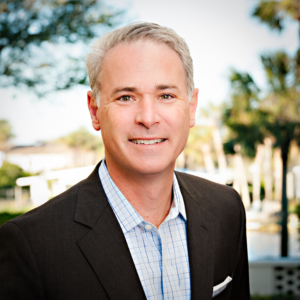Alexander Mann Solutions’ focus is on providing positive business outcomes for over 65 blue-chip clients across more than 80 countries. Headquartered in the UK, Alexander Mann Solutions’ deep heritage is creating and leading the recruitment process outsourcing industry.
Today, the $1.1 billion-valued privately-held company wants to continue to be viewed as a great talent acquisition partner globally as it leverages cutting-edge technologies and solutions including direct sourcing, talent pools, TTA and TTM. Alexander Mann Solutions’ president of the Americas and global head of its contingent workforce, Mike Wachholz, discusses these trends as well as the importance of the candidate experience.

Mike Wachholz, President of the Americas and Global Head of Contingent Workforce, Alexander Mann Solutions
Few companies believe they have an optimized talent mix or the talent needed to achieve company objectives. What could organizations do to change this narrative?
I think the right place to start is understanding there is a huge interest in total talent acquisition and management. Almost all companies now realize and accept that more than 50% of their workforce is going to be non-permanent over the next 10 years. For those progressive companies that have fully embraced this impending future of work, the first step in this dialogue is to ask themselves, “What does that mean to us as an organization and how does it impact the strategic goals and outcomes we’re shooting for?”
What do companies have to do to get an optimized talent mix?
Most organizations today are not getting what they need out of their current contingent workforce models. There’s an extensive pool of talented people who want to be embraced in a more flexible fashion, but companies aren’t really ready to engage them because the models that have been in place for over a decade haven’t evolved.
Companies are now trying to understand how to best leverage their non-employee workforce, and they’re realizing that to achieve their objectives, they need to better incorporate this important group into their overall talent strategy. And I think that’s been the missing piece in recent years.
How have your client relationships changed? Are clients coming to you more as a partner or do they still have a “they’re just the supplier” mentality?
The engagement and the relationship that we tend to have with clients is at a partnership level and the level of intimacy between us and our clients is accelerating. It’s expanding from beyond just the permanent employment aspect of business to include talent acquisition strategies for their contingent labor.
The legacy thinking has been, “We know we need contract workers, but we don’t want to talk about it too much.” Now, the conversation is starting to shift as braver organizations realize they need to embrace the contingent workforce model as more than half of their workforce is going to be non-employees.
We’re seeing a unification between HR, talent acquisition and procurement, starting at the executive level, where they are asking themselves, “Why are we trying to enforce a legacy engagement model with workers into a new emerging model today?”
Editor’s note: Alexander Mann Solutions commissioned Staffing Industry Analysts to conduct an international survey and research project among HR, procurement and other workforce professionals to gauge their opinion on talent acquisition and management trends and, in particular, issues relating to the emergence of total talent programs. The report will be released by Alexander Mann Solutions on Sept. 30. Pre-order your complimentary copy here.
Is it practical to pursue a total talent acquisition strategy? What should companies have in place before embarking on such a strategy?
Most organizations believe that they don’t have an optimized talent mix to meet their business objectives and they want to know how to get to that place where they can strategically manage the fluid part of their workforce. The biggest hurdles for these companies are organizational silos and the complexity within businesses.
Silos. Knocking down organizational silos and ensuring everybody understands and supports the talent acquisition strategy that the company is embracing is a crucial first step.
Everybody needs to be on the same page and an ongoing dialogue provided for the business leaders to ensure they recognize how the talent acquisition landscape is changing. They need to be working together to be able to best leverage the talent that they need to reach their strategic goals.
Complexity. The other hurdle is to get over the mindset that it’s too complex. This is new territory and there is some confusion around the many digital platforms available, the candidate engagement model and the regulatory environment. But companies can get through this complexity.
I’d advise embracing a simplistic approach and taking the first step by looking at what you can do to better leverage your non-employee workforce alongside your employed workforce.
Are there some must-have capabilities that they need to possess — like anything around technology, for instance — before pursuing total talent management, total talent acquisition?
Perhaps the most crucial step is to accept that there may not be a unified platform — like a VMS and an ATS — that properly manages every aspect of worker engagement and onboarding. There are highly capable digital platforms and technologies that can certainly help manage a workforce. But what is missing is that human service layer that connects people looking for meaningful work and organizations that want to engage with them.
This lack of an all-encompassing end-to-end solution that is relevant for employee and non-employee engagements is often what holds companies back when embracing this new model. But it’s progressing, and what is needed is an orchestrator, a service layer across all the various technology platforms to get yourself ready to better engage with your non-employed workforce.
Finally, while it may be easier said than done, you have got to have a robust plan that everyone is fully behind.
So given what you’re saying, there really isn’t one department that should own it?
There needs to be a lead, but the most progressive organizations have broken down the walls in talent acquisition between HR, talent acquisition and procurement to build cross-functional teams to play to the strengths of all sides.
The conversation is less around which group owns it and more about making sure that you’ve got a unified strategy and a team that’s working toward the same goal, that you’ve got cross-functional people who are working towards the same goal.
So, what should the solution providers do at their end to make this happen?
You have to take a step back and take the perspective of both the company and the job seeker — and I think most organizations on both the provider side and on the engagement side have missed this.
Generally speaking, non-employees are looking for better visibility into potential work opportunities across multiple organizations. So, do you have an engagement model and platform to give those workers meaningful insight into potential work opportunities?
Job seekers also want greater flexibility in how they engage with companies so that they can best match their lifestyles to the worker opportunities available to them. And I think that aspect isn’t focused on enough by either service providers or companies.
The reality is that, in today’s workplace, non-employed workers want to have better engagement with employers. And that has been one of the big barriers historically for HR and talent acquisition; trying to engage with contract workers but not really understanding or getting comfortable with how they can more closely align and engage their culture and their brand with people seeking work.
How do you see this future unfold with regard to TTA and TTM?
We’ve already talked about the notion that over the next 10 years, about 50% of all workers are projected to be nonpermanent. Obviously, that’s a significant portion of the workforce for companies. Over the next three to five years, those companies that are really the leaders in talent acquisition will be in a place to be able to directly source between 30% and 50% of their non-employee workforce.
So, 50% of the engagement model with all of those workers is going to change over the next three to five years. And those organizations that are making that sort of brave step today will be best-positioned to really succeed and beat the competition. But to get there, they have to embrace the fact that engaging with the nonemployee workforce is changing. They need to embrace that change and not run from it today.
Beyond that, those organizations that strategically leverage their brand and their culture and work or value proposition to attract from nonemployee talent pools will outpace the competition and they’ll actually be the winners in their respective industries.








